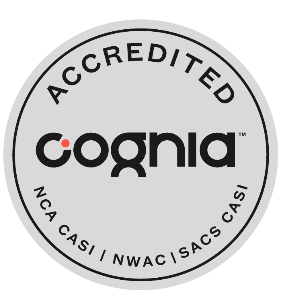September is American Founders and Constitution Month
Canyons School District is celebrating Constitution Day Friday, September 15, 2023 to commemorate the formation and signing of the US Constitution by 39 Founding Fathers on September 17, 1787.
Educational institutions that receive Federal funds are fiscally required to hold an educational program about the U.S. Constitution for its students. Additionally, with the passage of state bill H.B. 179 this will be the first year when a complementary observance, American Founders and Constitution Month, will be held in September.
You can find Constitution Day and American Founders resources below.
Constitution Day In-Class Video
All teachers K-5 will show the video as a part of their morning meeting and follow with a circle question such as, How does the Constitution impact your daily life?
6-12 Teachers will work with their administration to determine a plan implementation
K-5 considerations – Teachers may use the Wonders content integration found in the instructional guides.
DLI Consideration- Work with your administration to determine what the site-based decision is.
Learning Intention:
I am learning about the importance of the US Constitution so I can identify ways in which it impacts my daily life.
Success Criteria:
I will know I am successful when I have participated in a conversation about how the Constitution impacts my daily life.
Recommended Resources
These articles can be used to contextualize the knowledge from the video to text building vocabulary, deepening understanding, and providing additional topics related to the Constitution for discussion.
Benjamin Franklin’s Speech in support of the Constitution (primary source)
Optional Resources
Extension resources can be used at teacher discretion to meet the needs of their content/grade level standards and student understanding. These are lesson plans about the Constitution and games about the Constitution.
Interactive Resources
Extension Resources
For teachers who might want to create an assignment that includes additional research on the founding fathers, amendments, Federalism, and the Great Compromise.
Standards that Support Constitution Day Activites
Below you will find standards from our curriculum maps, K-12, that support the academic instruction of the Constitution, as well as the critical thinking and application skills applied to the study of the Constitution presented.
Elementary Standards
Anchor Standard 1: Speaking and Listening K-5 (Comprehension and Collaboration): Prepare for and participate effectively in a range of conversations and collaborations with diverse partners, building on others’ ideas and expressing their own clearly and persuasively.
Students will learn and exhibit traits of good citizenship.
- Standard K.3.1: Describe some of the rules students or family members follow and why they are important as a member of a family, class, and school.
- Standard K. 3. 4: Explain why national, state, and other symbols and actions (including the United States flag, the pledge of allegience, the bald eagle, the Utah flag) are considered import. What rules and tradition have been made to reflect that importance?
Students will analyze their role as citizens in school and a community.
- Standard 1.3.1: Compare how classroom rules are similar to laws in the community.
- Standard 1.3.4: Identify the symbols, landmarks, and essential documents of the school, community, state, and nation (including the national motto and state emblem). Demonstrate how to show respect for those items, including care and disposal of the United State flag.
Students use historical thinking skills to explore continuity and change in their community, Utah, and the United States.
- Standard 2.1.4: Retell the histories of key people and events connected to state and national symbols, landmarks, and essential documents (for example, Thomas Jefferson and the Declaration of Independence, Francis Scott Key and The Star Spangled Banner, Abraham Lincoln and the Lincoln Memorial, Theodore Roosevelt and Woodrow Wilson and national parks, Utah pioneers and Utah’s nickname and motto).
Students are introduced to the concept of government. Students learn about the rights and responsibilities of citizenship, explain how people must work together to resolve conflict, and understand the importance of respecting differences.
- Standard 2.3.2: Describe the rights and responsibilities of citizens in the United States and Utah.
- Standard: 2.3.6: Identify celebrations and state and national holidays that remember and honor people and events in the history of Utah and the United States.
Students will learn about and compare different types of government. They will identify significant ideas in the United States and Utah Constitutions, as well as compare similarities and differences between the documents.
- Standard 3.1.1: Discuss the basic differences between different forms of government, including a constitutional republic, a pure democracy, an oligarchy, and a monarchy.
- Standard 3.1.2: Explain why the first three words of the United States Constitution are vital to the workings of representative government.
- Standard 3.1.3: Summarize how the Constitution of the United States is the supreme law of the land, and explain how laws provide order and stability.
- Standard 3.1.4: Identify the rights protected by the First Amendment in the Bill of Rights, and analyze how those rights affect them.
- Standard 3.1.5: Explain how the Constitution balances power between the three branches of government at both the state and federal levels (checks and balances).
Students will study Utah’s continued development as a state, including learning about its Constitution and the role of geography in Utah’s economy and settlement patterns. Students will evaluate the roles and functions of different levels and types of governments. They will identify and explain the cultural connections that Utah’s diverse communities share.
- Standard 4.4.2: Compare the Utah Constitution with the United States Constitution, noting the similarities (including legislative, executive and judicial branches, rights of citizens) and important/ significant differences (for example, role in education, public lands, local governance).
- Standard 4.4.5: Analyze the way local, state, tribal, and federal governments interact with one another.
Students will demonstrate their understanding of the Constitution and its relevance in their lives, including the Bill of Rights, the branches of government, and how the Constitution has changed and been interpreted over time.
- Standard 5.3.1: Use examples from the Constitution to investigate and explain the development, general purpose, and significant foundational principles of the United States government (a compound constitutional republic), as well as earlier documents and philosophies used to help develop the Constitution (for example, the Magna Carta, Mayflower Compact, Articles of Confederation, Haudenosaunee (Iroquois) Confederacy).
- 5.3.2: Apply the ideals found in the Preamble of the United States Constitution to historic and current events and issues.
- Standard 5.3.3: Explain why the Founders established a compound constitutional republic with three branches, and cite historic and current examples of checks and balances.
- Standard 5.3.4: Explain the significance of the Bill of Rights, and identify the impact of one of these amendments in history, a current event, and/or your daily life.
- Standard 5.3.5: Investigate how constitutional amendments are passed, and provide examples of how amendments to the Constitution have extended rights to groups originally denied protection under the Constitution (for example, women, enslaved people, immigrants, Black Americans, Native Americans).
- Standard 5.3.6: Describe the civic duties members of American society have today (for example, voting, holding public office, jury duty).
Secondary Standards
Anchor Standard 1: Speaking and Listening 6-12 (Comprehension and Collaboration): Prepare for and participate effectively in a range of conversations and collaborations with diverse partners, building on others’ ideas and expressing their own clearly and persuasively
- Standard 6.1.6: Compare the purposes and functions of early governments (for example, Monarchy, oligarchy, tyranny, pure democracy, republic, theocracy) to modern governments.
- Standard 6.2.5: Critique how and why systems of governance took steps toward self-rule during the post-classical period (for example, the rise of the merchant class, Magna Carta, feudalism in Europe and Japan).
- Standard 3.1 Students will identify the civic virtues and principles codified by the Utah Constitution. (civics)
8th US History I: Strand 4
- Standard 4.1: Students will explain how the ideas, events, and compromises which led to the development and ratification of the Constitution are reflected in the document itself.
- Standard 4.2: Students will describe the structure and function of the government that the Constitution creates.
- Standard 4.3: Students will use historic case studies and current events to trace how and explain why the rights, liberties, and responsibilities of citizens have changed over time.
- Standard 4.4: Students will use evidence to explain how the Constitution is a transformative document that contributed to American exceptionalism.
Students will explain why and how people organize into a range of political structures at different scales.
Students will describe the structure of the United States’ form of government as a compound constitutional republic, including the ideas of federalism; checks and balances; separation of powers; commerce, elastic, and supremacy clauses; popular sovereignty; and limited government.








